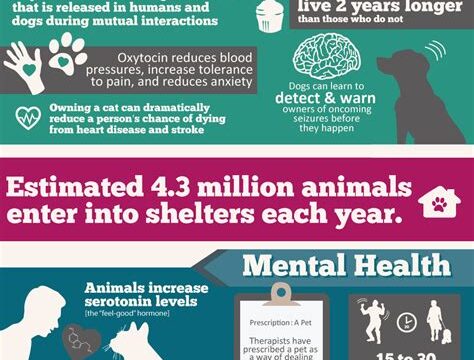Are you a dog owner who wants to provide the best care and support for your beloved furry friend? If so, you may find that having a pet consultant could be incredibly beneficial for both you and your dog. In this blog post, we will explore the various advantages of having a pet consultant for your canine companion, from understanding your dog’s needs to keeping up with the latest pet trends. We will discuss how a pet consultant can help you identify behavioral issues, provide customized training plans, address health and nutrition concerns, and establish effective communication with your dog. Additionally, we will delve into how a pet consultant can assist in managing separation anxiety and stress, grooming and hygiene, and offer valuable insight into the latest pet trends. By the end of this post, you’ll see just how valuable having a pet consultant can be in providing the best possible care for your furry family member.
Understanding Your Dog’s Needs
Dogs have many needs that are unique to their species, and it’s important for pet owners to understand what these needs are in order to provide the best care for their furry friends. One of the most fundamental needs of dogs is exercise. Dogs are active animals that require regular physical activity to maintain their health and well-being. Without enough exercise, dogs can become bored, anxious, and even develop behavioral issues.
Another important need for dogs is socialization. Dogs are social animals that crave companionship and interaction with both humans and other dogs. It’s important for pet owners to provide their dogs with opportunities to socialize in order to prevent loneliness and boredom. Socialization can also help prevent aggressive behavior and anxiety in dogs.
In addition to exercise and socialization, dogs also have nutritional needs that must be met in order to keep them healthy. A balanced diet that includes the right amount of proteins, carbohydrates, fats, vitamins, and minerals is essential for a dog’s overall health. Pet owners should consult with their veterinarian to determine the best diet for their dog based on their age, breed, size, and activity level.
Understanding a dog’s needs is crucial for providing the best care and ensuring their overall well-being. By meeting a dog’s need for exercise, socialization, and nutrition, pet owners can help their furry friends live healthy and happy lives.
Identifying Behavioral Issues
Identifying behavioral issues in your dog is crucial for their overall well-being and happiness. It is important to pay attention to any changes in your dog’s behavior, as these could be indicative of underlying issues that need to be addressed.
Some common behavioral issues in dogs include aggression, anxiety, fear, excessive barking, chewing, and separation anxiety. If you notice any of these behaviors in your dog, it is important to take immediate action to address the root cause and provide the necessary support.
One way to identify behavioral issues is to observe your dog’s body language and vocalizations. Changes in posture, ear position, tail wagging, and growling can all be signs of underlying behavioral issues that need to be addressed.
Seeking help from a professional dog trainer or behaviorist is also important in identifying and addressing behavioral issues in your dog. They can help you create a customized training plan to address the specific behavioral issues your dog may be experiencing.
Providing Customized Training Plans
When it comes to training your dog, it’s important to recognize that every dog is unique and may require different approaches. Whether you have a new puppy or an older dog with behavioral issues, providing customized training plans is essential for their development and well-being.
Customized training plans take into account the individual dog’s personality, breed, age, and specific behavioral issues. A one-size-fits-all approach to training may not be effective, which is why personalized training plans are crucial for success.
Working with a professional dog trainer to develop a customized training plan can help address specific behavioral issues and set achievable goals for both you and your dog.
By providing customized training plans, you can ensure that your dog receives the individualized attention and guidance they need to thrive and become a well-behaved and happy member of your family.
Addressing Health and Nutrition Concerns
When it comes to health and nutrition concerns for your dog, it’s important to be proactive in addressing any issues that may arise. One of the most critical aspects of your dog’s well-being is their diet. Ensuring that they are receiving the proper nutrients and staying at a healthy weight is essential for their overall health.
Regular visits to the vet can help to monitor your dog’s health and catch any potential issues early on. As your dog ages, their nutritional needs may change, so it’s important to consult with a professional to adjust their diet accordingly.
Additionally, keeping an eye on your dog’s behavior and energy levels can provide insight into their overall health and whether any nutritional adjustments need to be made. It’s also important to avoid feeding your dog human food or table scraps that can be harmful to their health.
By addressing health and nutrition concerns proactively, you can ensure that your dog is living a long and healthy life.
Establishing Effective Communication
Establishing effective communication with your dog is crucial for building a strong bond and fostering a positive relationship. Dogs, like humans, rely on communication to understand and navigate the world around them. By understanding your dog’s body language, vocalizations, and behavior, you can identify their needs and emotions, and respond appropriately. This means paying attention to their tail wagging, ear position, and overall body posture, as well as the tone and pitch of their barks or whines.
Another important aspect of establishing effective communication with your dog is through training and reinforcement. Using positive reinforcement techniques, such as treats, praise, and play, you can provide clear and consistent signals to your dog about what behavior is desired and rewarded. This helps to create a common language between you and your dog, making it easier for them to understand your expectations and respond accordingly.
In addition to non-verbal cues and training, verbal communication is also an important part of establishing effective communication with your dog. Using clear and simple commands, you can convey your expectations and intentions to your dog. It’s important to be consistent with your verbal cues and to use the same words for the same actions, which helps to avoid confusion and misinterpretation.
Establishing effective communication with your dog takes time, patience, and a willingness to observe and learn from your dog’s behavior. By paying attention to their signals, providing positive reinforcement, and using clear verbal commands, you can build a strong channel of communication with your furry friend, leading to a stronger bond and a happier, well-behaved pet.
Managing Separation Anxiety and Stress
Managing separation anxiety and stress in dogs can be a challenging task for pet owners. It’s important to understand the root causes of these issues in order to effectively address them. Dogs can experience separation anxiety when they are left alone for extended periods of time, leading to destructive behaviors such as chewing, barking, and soiling in the house.
Identifying the behavioral signs of separation anxiety is critical in providing the right support for your pet. This might include excessive panting, pacing, or attempting to escape confinement. Once you have pinpointed these signs, it’s essential to provide customized training plans to help your dog feel more comfortable and secure when left alone.
Addressing these issues also involves looking into your dog’s health and nutrition concerns. A well-balanced diet and regular exercise can play a significant role in reducing stress and anxiety. It’s important to establish effective communication with your pet to help them understand that being alone is not a negative experience.
Managing separation anxiety and stress in dogs is a multifaceted process that requires patience, understanding, and consistency. By assisting with grooming and hygiene, keeping up with the latest pet trends, and seeking professional guidance when needed, pet owners can create a safe and comfortable environment for their furry friends, even when they are not present.
Assisting with Grooming and Hygiene
Grooming and hygiene are important aspects of caring for your furry friend. It is essential to ensure that your dog is well-groomed and clean to keep them healthy and happy.
Regular grooming can help you identify any potential health concerns such as fleas, ticks, or skin irritations. It also gives you the opportunity to bond with your pet and establish trust.
When it comes to hygiene, keeping your dog’s teeth, ears, and nails clean is crucial. Poor dental hygiene can lead to dental issues and bad breath, while untrimmed nails can cause discomfort and affect your dog’s gait.
Assisting with grooming and hygiene may involve brushing your dog’s fur, cleaning their ears, brushing their teeth, and trimming their nails. It is important to take the time to educate yourself on proper grooming techniques and use the right tools to ensure your dog’s comfort and safety.
Keeping Up with Latest Pet Trends
In the ever-evolving world of pet care, it is crucial for pet owners to stay updated on the latest trends in order to provide the best possible care for their furry friends.
One of the current trends in the pet industry is the shift towards natural and holistic products. More and more pet owners are seeking out organic and all-natural food and treats for their pets, as well as non-toxic grooming and hygiene products. This trend is a response to the growing concern for the health and well-being of pets, as well as the environment.
Another emerging trend is the rise of technology in pet care. From fitness trackers and smart feeding devices to interactive toys and games, pet owners are now able to monitor and engage with their pets in new and innovative ways. This trend not only enhances the overall well-being of pets but also strengthens the bond between pets and their owners.
Furthermore, the popularity of pet-friendly travel and accommodations is on the rise. More and more hotels, restaurants, and attractions are becoming pet-friendly, allowing pet owners to bring their furry companions along on their adventures. This trend reflects the increasing integration of pets into their owners’ lifestyles and the desire for more inclusive experiences.





